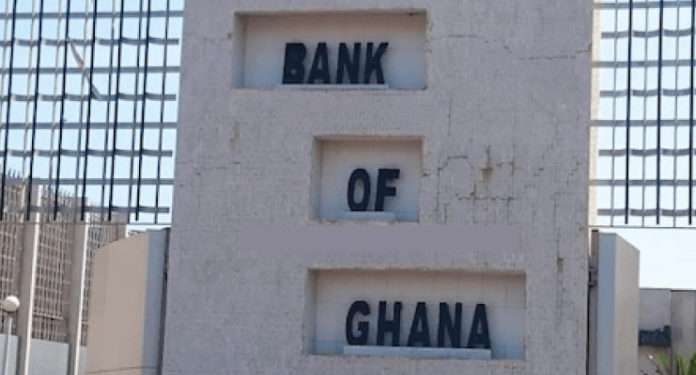Policy rate rises to 22% on 300 basis points hike by BoG
“Under the circumstances, and considering the risks to the inflation outlook, the Committee decided on a 300 basis points increase in the Monetary Policy Rate to 22 percent,”
- Advertisement -
The Central Bank has hiked its policy rate by 300 basis points.
The hike in the prime rate follows the emergency Monetary Policy Committee (MPC) meeting held by the Central Bank today, August 17, 2022.
- Advertisement -
On the back of the policy rate hike, the new policy rate of the Central Bank stands at 22%.
- Advertisement -
With the increment in the policy rate, interest rates on bank loans to households and businesses is expected to increase, making cost of production by businesses more costly.
The increment in the policy rate by the Central Bank is believed to mainly due to the country’s rising inflation and heightened pressures in the foreign exchange market regarding the depreciation of the cedi.
“Under the circumstances, and considering the risks to the inflation outlook, the Committee decided on a 300 basis points increase in the Monetary Policy Rate to 22 percent,” said the MPC.
Inflation uptick, other economic factors forces BoG to hold emergency MPC meeting on Wednesday
The Monetary Policy Committee (MPC) of the Bank of Ghana (BoG) announced an emergency meeting scheduled for today, August 17, 2022.
Per a statement issued by the Central Bank, the emergency MPC meeting is to review recent developments in the Ghanaian economy.
The move by the Committee, is believed to be mainly the result of the continuous increments in the country’s headline inflation, given that the use of monetary policy tools such as hikes in the Central Bank’s prime rate has failed to curtail increments in inflation and revert it to the Bank’s medium target band.
Other pertinent issues such as the depreciation of the cedi as well as measures to check the country’s declining foreign reserves featured in the Committee’s discussions and review of the economy.
Inflation at the end of the month of July rose to a record 31.7%.
This is some 1.9 percentage points higher than the recorded 29.8% in June 2022.
Government Statistician, Prof Samuel Kobina Annim, said the inflation rate for July was mainly driven by transport and utilities.
- Advertisement -
According to the GSS, the rise in inflation was due to increments in Transport (44.6%); Housing, Water, Electricity, Gas and Other Fuels (43.0%); Furnishings, Household Equipment and Routine Household Maintenance (42.0%); Recreation, Sport and Culture (33.8%); Personal Care, Social Protection and Miscellaneous Goods and Services (33.7%) and Food and Non-Alcoholic Beverages (32.3%).
Food inflation went up to 32.3% in July 2022, from 30.7% in June 2022.
Again, non-food inflation also shot up to 31.3% in July 2022, from 29.1% the previous month.
Similarly, inflation for locally produced items was 30.9%, whereas inflation for imported items was 33.9%.
Goldman Sachs expects 2% hike in policy rate
Meanwhile, US Investment Banking Giant Goldman Sachs, projected at least a 200 basis points hike in the policy rate to 21 percent from the current rate of 19 percent.
The forecast by the Economic Research Wing of Goldman Sachs followed the announcement of the emergency meeting by the MPC.
The Bank in its advice to investors noted that the move by the Bank of Ghana will be influenced by the fact that the central bank may want to take some extra measures to deal with the current pressures on the Ghana cedi as well as the rising inflation rate.
According to the Goldman Sachs “We expect the MPC to announce a 200bp policy rate hike to 21% and see a meaningful upside risk to this forecast, given the extent of FX and domestic financing pressures”
The Bank of Ghana at its last meeting in July 2022 left the rate unchanged at 19%, citing “deceleration” of the rate of inflation and concerns over economic growth.
The Bank of Ghana, has since the end of 2021 increased the Policy Rate by some 550 basis points to try and contain the rising inflation rate.
The emergency meeting is coming after an acceleration in the pace of depreciation of the Cedi in the past two weeks (almost 10% vs. the USD), amounting to a cumulative 50% currency depreciation year-to-date.
- Advertisement -


